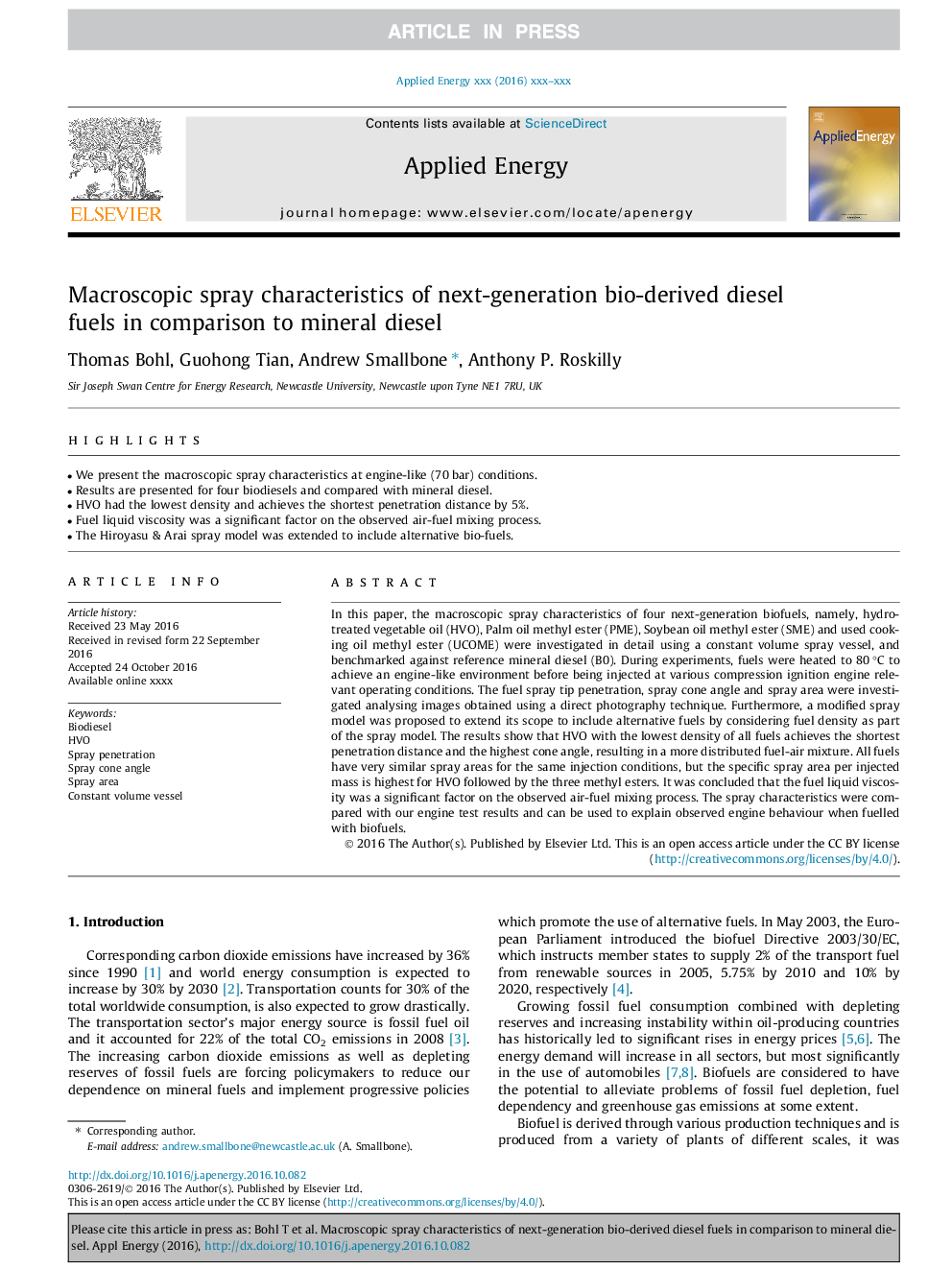| Article ID | Journal | Published Year | Pages | File Type |
|---|---|---|---|---|
| 4916821 | Applied Energy | 2017 | 12 Pages |
Abstract
In this paper, the macroscopic spray characteristics of four next-generation biofuels, namely, hydrotreated vegetable oil (HVO), Palm oil methyl ester (PME), Soybean oil methyl ester (SME) and used cooking oil methyl ester (UCOME) were investigated in detail using a constant volume spray vessel, and benchmarked against reference mineral diesel (B0). During experiments, fuels were heated to 80 °C to achieve an engine-like environment before being injected at various compression ignition engine relevant operating conditions. The fuel spray tip penetration, spray cone angle and spray area were investigated analysing images obtained using a direct photography technique. Furthermore, a modified spray model was proposed to extend its scope to include alternative fuels by considering fuel density as part of the spray model. The results show that HVO with the lowest density of all fuels achieves the shortest penetration distance and the highest cone angle, resulting in a more distributed fuel-air mixture. All fuels have very similar spray areas for the same injection conditions, but the specific spray area per injected mass is highest for HVO followed by the three methyl esters. It was concluded that the fuel liquid viscosity was a significant factor on the observed air-fuel mixing process. The spray characteristics were compared with our engine test results and can be used to explain observed engine behaviour when fuelled with biofuels.
Related Topics
Physical Sciences and Engineering
Energy
Energy Engineering and Power Technology
Authors
Thomas Bohl, Guohong Tian, Andrew Smallbone, Anthony P. Roskilly,
